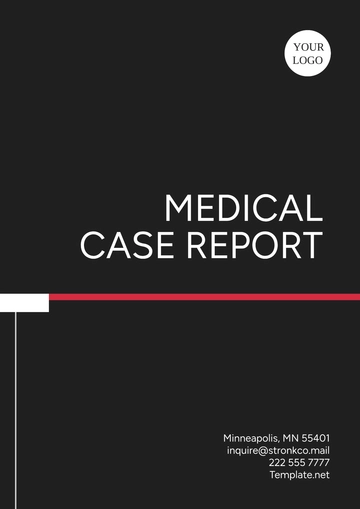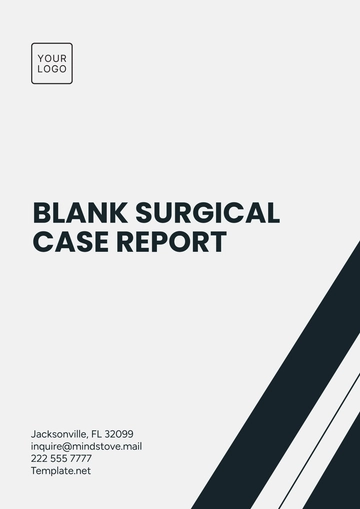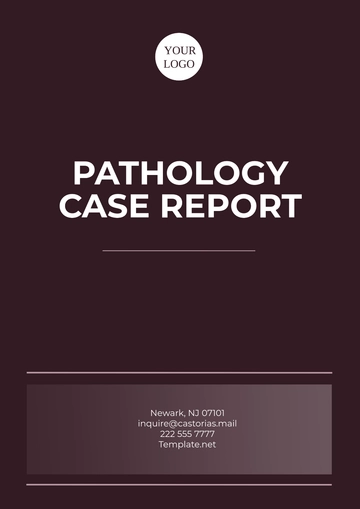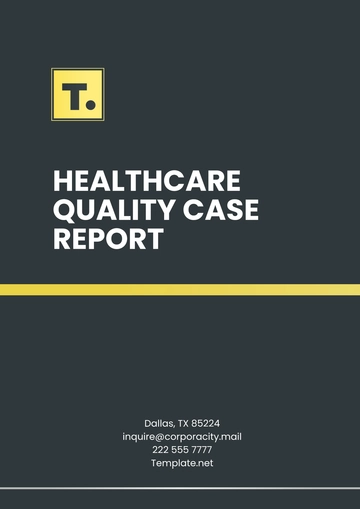Free Sample Patient Medical Report

1. Chief Complaint (Reason for Visit)
Severe, intermittent chest pain with associated shortness of breath and left arm numbness for the past two days. Pain intensity increases with physical activity and is minimally relieved by rest.
2. History of Present Illness (HPI)
Onset: The symptoms started 48 hours ago while the patient was at work, suddenly experiencing chest pain after lifting heavy materials. The pain persisted overnight and worsened the next day, prompting this visit to the emergency department.
Location: Central chest pain radiating to the left arm and shoulder.
Duration: Constant dull ache with episodes of sharp pain lasting 10-15 minutes during exertion.
Characteristics: Describes pain as “crushing” and tight. Intensity rated as 8/10 during episodes, and 5/10 at rest.
Aggravating/Relieving Factors: Aggravated by physical activity and stress. Slightly relieved by sitting down and resting but not completely. Nitroglycerin provided partial relief upon arrival at the hospital.
Associated Symptoms: Sweating, dizziness, nausea, mild shortness of breath, and a feeling of impending doom during episodes of intense pain.
Severity: Moderate to severe; patient feels unable to continue daily work duties due to chest pain.
3. Medical History
Past Medical Conditions:
Hypertension (diagnosed in 2018).
Type 2 Diabetes Mellitus (diagnosed in 2021, poorly controlled).
Hyperlipidemia (diagnosed in 2022, non-compliant with lipid-lowering medication).
Surgeries/Procedures:
Appendectomy (2010, no complications).
Medications:
Metformin 500 mg twice daily (diabetes).
Lisinopril 10 mg daily (hypertension).
Atorvastatin 20 mg daily (non-compliant, last taken 3 months ago).
Aspirin 81 mg daily (started last year for cardiovascular risk).
Allergies:
Penicillin (causes the rash).
4. Family History
Father: Passed away from a myocardial infarction at age 65.
Mother: Alive, 70 years old, with a history of Type 2 Diabetes and hypertension.
Siblings: Two older brothers, both with hypertension, no cardiac history.
5. Social History
Lifestyle Factors:
Smokes 1 pack of cigarettes daily for the last 15 years; has tried to quit twice unsuccessfully.
Drinks alcohol socially, 2-3 drinks on weekends, no history of excessive drinking.
No illicit drug use.
Diet: High in processed foods, red meat, and carbohydrates; admits to poor dietary control and frequent fast food consumption.
Physical Activity: Low, no regular exercise routine. Primarily sedentary outside of work duties.
Occupation: Construction worker, involving heavy lifting, long hours on foot. Reports increasing fatigue and decreased work capacity over the last year.
Living Situation: Lives with wife and two children in a single-family home.
6. Physical Examination
Vital Signs:
Blood Pressure: 150/95 mmHg
Heart Rate: 98 bpm (tachycardia)
Respiratory Rate: 22 bpm (tachypnea)
Temperature: 37.2°C (99°F)
Oxygen Saturation: 96% on room air
General Appearance:
The patient is alert but visibly uncomfortable, sweating, and clutching his chest intermittently. Appears anxious, with a pale skin tone.
System Examination:
Cardiovascular:
Irregular heart sounds, presence of S4 gallop, no murmurs or rubs. Jugular venous distention was noted, raising suspicion of heart failure.
Peripheral pulses are weak, with slight cyanosis in the extremities.
Respiratory:
Lungs clear to auscultation bilaterally, no crackles or wheezing. Mild tachypnea present.
Abdomen:
Soft, non-tender, no organomegaly or abnormal masses.
Neurological:
Fully alert and oriented to time, place, and person. No focal neurological deficits. Normal strength in all extremities.
Musculoskeletal:
No joint swelling or tenderness. Full range of motion in all extremities.
7. Investigations
Laboratory Tests:
Complete Blood Count (CBC):
WBC: 8,000/μL (normal)
Hemoglobin: 14.5 g/dL (normal)
Platelets: 250,000/μL (normal)
Electrolytes:
Sodium: 138 mEq/L (normal)
Potassium: 4.0 mEq/L (normal)
Chloride: 104 mEq/L (normal)
Bicarbonate: 24 mEq/L (normal)
Troponin: Elevated at 0.8 ng/mL (reference range <0.04 ng/mL), consistent with myocardial injury.
HbA1c: 8.1% (poor control of diabetes).
Lipid Panel:
Total Cholesterol: 245 mg/dL (elevated)
LDL: 160 mg/dL (elevated)
HDL: 35 mg/dL (low)
Triglycerides: 180 mg/dL (elevated)
Imaging Studies:
Electrocardiogram (ECG):
ST-segment depression in leads II, III, and aVF, suggestive of myocardial ischemia.
Sinus tachycardia with a heart rate of 98 bpm.
Chest X-ray:
Normal heart size, no signs of pulmonary congestion or pleural effusion.
8. Diagnosis
Primary Diagnosis:
Acute Coronary Syndrome (Unstable Angina)
Secondary Diagnoses:
Hypertension (uncontrolled)
Type 2 Diabetes Mellitus (uncontrolled)
Hyperlipidemia
9. Treatment Plan
Immediate Management:
Nitroglycerin 0.4 mg sublingual every 5 minutes as needed for chest pain (given during evaluation).
Aspirin 325 mg loading dose, followed by 81 mg daily for antiplatelet therapy.
Clopidogrel 75 mg daily.
Metoprolol 25 mg twice daily for rate control and reduction of myocardial oxygen demand.
Insulin sliding scale for hyperglycemia management in light of elevated HbA1c.
Long-Term Management:
Begin atorvastatin 40 mg daily for lipid control.
Referral to cardiology for potential angiography and further management of coronary artery disease.
Smoking cessation program with nicotine replacement therapy.
Dietary modification with referral to a dietitian for management of diabetes and hyperlipidemia.
Cardiac rehabilitation program post-stabilization.
Follow-Up:
Patient to follow up in 1 week with cardiology for a stress test and possible coronary angiogram.
Diabetes education and glucose monitoring with endocrinologist.
Return to the emergency department if symptoms worsen, especially if experiencing new or increasing chest pain.
Lifestyle Recommendations:
Immediate smoking cessation.
Start on a heart-healthy, low-sodium, low-fat diet.
Moderate-intensity exercise (walking) to begin after clearance from cardiology.
10. Doctor’s Notes
The patient is at significant risk for myocardial infarction given current presentation and medical history. Immediate intervention for chest pain and management of cardiovascular risk factors is critical. Will initiate further cardiac workup, including coronary angiography. Diabetes and lipid control require urgent optimization.
Prepared by:
 [Your Name]
[Your Name]
Cardiologist
- 100% Customizable, free editor
- Access 1 Million+ Templates, photo’s & graphics
- Download or share as a template
- Click and replace photos, graphics, text, backgrounds
- Resize, crop, AI write & more
- Access advanced editor
Streamline documentation with this Medical Report Template from Template.net. This fully editable and customizable template simplifies medical reporting, ensuring clarity and professionalism. Editable in our Ai Editor Tool, it’s designed to meet various healthcare needs.
You may also like
- Sales Report
- Daily Report
- Project Report
- Business Report
- Weekly Report
- Incident Report
- Annual Report
- Report Layout
- Report Design
- Progress Report
- Marketing Report
- Company Report
- Monthly Report
- Audit Report
- Status Report
- School Report
- Reports Hr
- Management Report
- Project Status Report
- Handover Report
- Health And Safety Report
- Restaurant Report
- Construction Report
- Research Report
- Evaluation Report
- Investigation Report
- Employee Report
- Advertising Report
- Weekly Status Report
- Project Management Report
- Finance Report
- Service Report
- Technical Report
- Meeting Report
- Quarterly Report
- Inspection Report
- Medical Report
- Test Report
- Summary Report
- Inventory Report
- Valuation Report
- Operations Report
- Payroll Report
- Training Report
- Job Report
- Case Report
- Performance Report
- Board Report
- Internal Audit Report
- Student Report
- Monthly Management Report
- Small Business Report
- Accident Report
- Call Center Report
- Activity Report
- IT and Software Report
- Internship Report
- Visit Report
- Product Report
- Book Report
- Property Report
- Recruitment Report
- University Report
- Event Report
- SEO Report
- Conference Report
- Narrative Report
- Nursing Home Report
- Preschool Report
- Call Report
- Customer Report
- Employee Incident Report
- Accomplishment Report
- Social Media Report
- Work From Home Report
- Security Report
- Damage Report
- Quality Report
- Internal Report
- Nurse Report
- Real Estate Report
- Hotel Report
- Equipment Report
- Credit Report
- Field Report
- Non Profit Report
- Maintenance Report
- News Report
- Survey Report
- Executive Report
- Law Firm Report
- Advertising Agency Report
- Interior Design Report
- Travel Agency Report
- Stock Report
- Salon Report
- Bug Report
- Workplace Report
- Action Report
- Investor Report
- Cleaning Services Report
- Consulting Report
- Freelancer Report
- Site Visit Report
- Trip Report
- Classroom Observation Report
- Vehicle Report
- Final Report
- Software Report





























